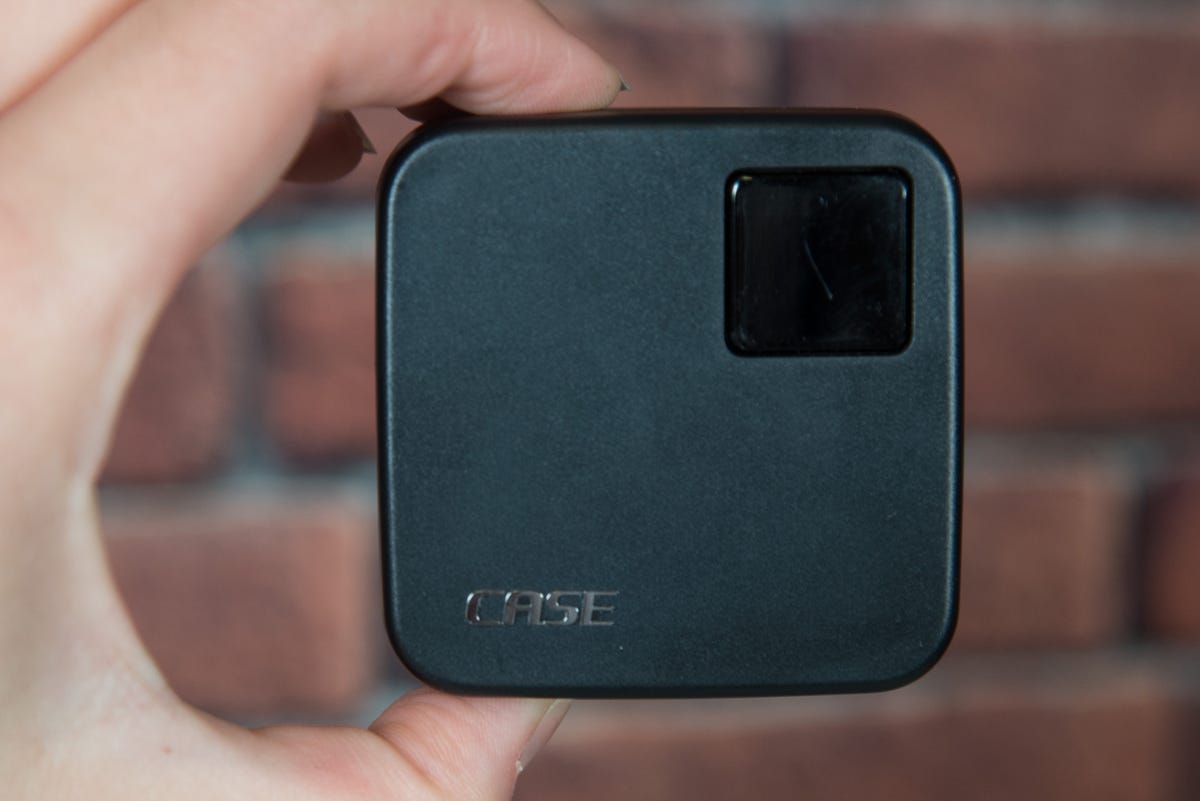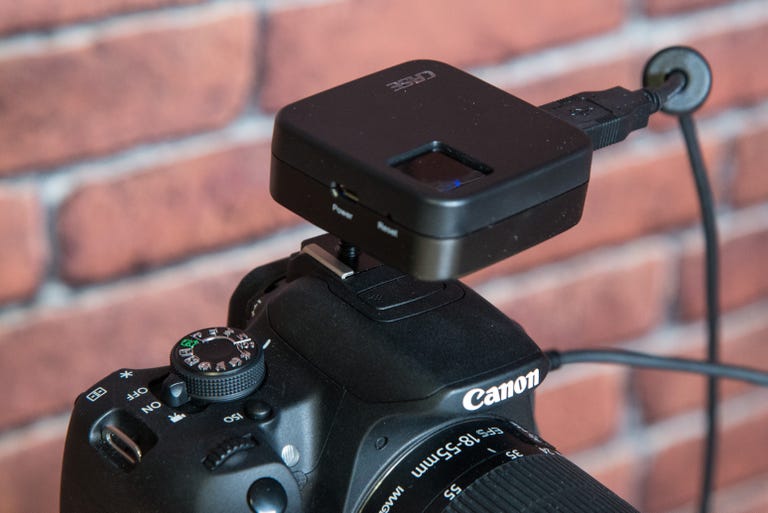 Why You Can Trust CNET
Why You Can Trust CNET Cheering Tech Case Remote review: The inexpensive box that adds Wi-Fi to your dSLR
Does your dSLR lack Wi-Fi? The Case Remote by Cheering Tech provides an inexpensive solution if you want to control your Canon or Nikon camera via smartphone.
Successfully funded to the tune of almost $40,000 by eager backers on Indiegogo, the Case Remote is a small black box that adds wireless capabilities to many Canon and Nikon dSLRs.
The Good
The Bad
The Bottom Line
A full list of compatible cameras can be found on the Case Remote website, with support for other brands like Pentax, Fuji and Sony coming in the middle of 2015. The Case Remote is currently available worldwide via Amazon or Ali Express for $129, which converts to about £85 or AU$160 at current rates. and it can be found at smaller regional online retailers as well.

Case Remote isn't the only third-party Wi-Fi offering out there for dSLRs. The CamRanger, Weye Feye and iUSBport are its main competitors, all letting you wirelessly control your dSLR from the comfort of a phone or tablet.
But they're all bigger and more expensive than the Case Remote.
On the other end of the spectrum, products such as the Eyefi SD card have been around for quite some time. This supports wireless transfer of images between camera and mobile device rather than full remote control. There's even an option for the cheapskates out there: a free app that lets you trigger a dSLR remotely via infrared on your Android phone.
Design and features
The Case Remote is a small, square box measuring 2x2 inches with just one physical button at the top. Enclosed in the button are two lights to indicate the battery and system status.
Battery life is shown by an alternating green/yellow/red light, while the system status light flashes blue when the device is starting or updating. A solid blue light means it's ready to go.
At the side is a Micro-USB port, though you'll need to supply your own power adapter to charge the internal battery.
To connect the Case Remote to your dSLR, you need another cord so they can talk to each other. Usually it's a Mini-USB-to-standard-USB cable, though mileage may vary according to each particular camera model.
This is a bring-your-own-cable kind of deal, and the manual recommends you use the one that was supplied with your camera for best results -- hopefully you've still got it lying around somewhere.
While the Case Remote is small, it still needs to be secured somehow so it doesn't get in the way of shooting. There's a standard 1/4-inch screw hole so it can sit on the dSLR's hotshoe using the included mount, but this means you won't be able to attach anything else like a flash unit or cube spirit level.
Once the physical connection is established between the Case Remote and the dSLR, download the Android or iOS app depending on your mobile device. Turn the Case Remote on and it will establish an ad hoc network that your phone can connect to.
Use the SSID and password provided on the back of the small instruction manual in the box to get things started.
Performance
The app is pretty much identical across Android and iOS, which makes it easy if you are jumping between the two systems. Once it starts up, you are presented with a screen containing a remote shutter button, live view toggle, camera battery life indicator, grid line toggle, AF trigger and exposure control options.
When live view is activated, you get a full feed of what the camera is seeing with a delay of approximately 0.5 to 1 second. Note that when Case Remote is plugged in, you can control the camera only through the app -- not by pressing any buttons on the camera. You can, however, adjust the shooting mode via the mode dial if needed, and the selection will be reflected in the app.
Metering, white balance and drive mode can all be set through the app. Exposure can also be set with more granularity by tapping the three-line icon next to the camera name.
As a simple remote control, the Case Remote does what it says on the tin. It's fully functional, but not overly quick: expect a 3- to 4-second delay after pressing the button in the app before the camera actually takes the photo.
Reviewing images, however, is snappy. The app loads very small thumbnails in playback mode for you to review or download to your mobile device.
Beyond acting as a simple remote control, the app has several more layers to explore. Underneath the main screen, tap the Features icon to bring up focus stacking (useful for macro photography), HDR features and time-lapse functionality. The Case Remote can also embed GPS data in photos if you so desire.
In time-lapse mode, the app lets you set a start time, an interval and an end time. Press the button and away the camera goes, with images stored on the camera's SD card. Unfortunately, I found that the app didn't give me timely feedback on the time-lapse progress until it had completed. It has an onscreen timer and shot count, but it updates infrequently.
In HDR mode, Case Remote lets you choose the value that the camera will bracket around: shutter, aperture or ISO. It supports a maximum of nine images in one HDR burst. Note that the app doesn't stitch them together for you into one finished HDR photo.
The app is mostly stable in general shooting situations, but I found the Android version tended to crash when the camera powered off and on again, and sometimes even when the dSLR went into power-saving mode. The iOS app seemed more stable in this respect.
Battery life is good, with the 1,500mAh unit lasting approximately 5 hours -- taking photos, idle time and in live-view mode -- on a full charge. The wireless signal can be received as far as 50 metres (more than 160 feet) from the device.
The Case Remote's manufacturer, Cheering Tech, has promised additional functionality in future firmware updates to the device.
Conclusion
In its current iteration, a few connection issues prevent the Case Remote from being a fully polished wireless solution. For the $129 price, however, it's a very good way to add Wi-Fi capabilities to a Canon or Nikon dSLR with the added bonus of full remote control from your iOS or Android device.


